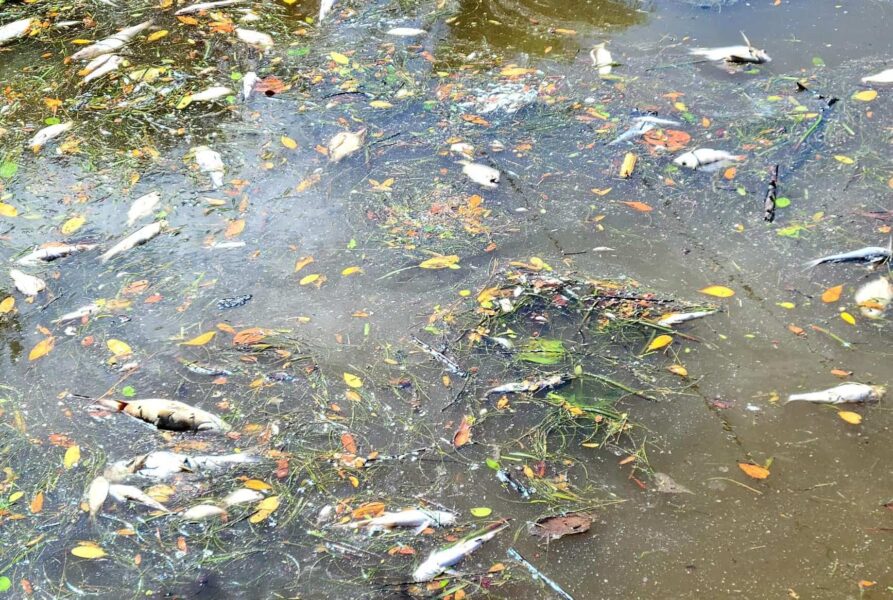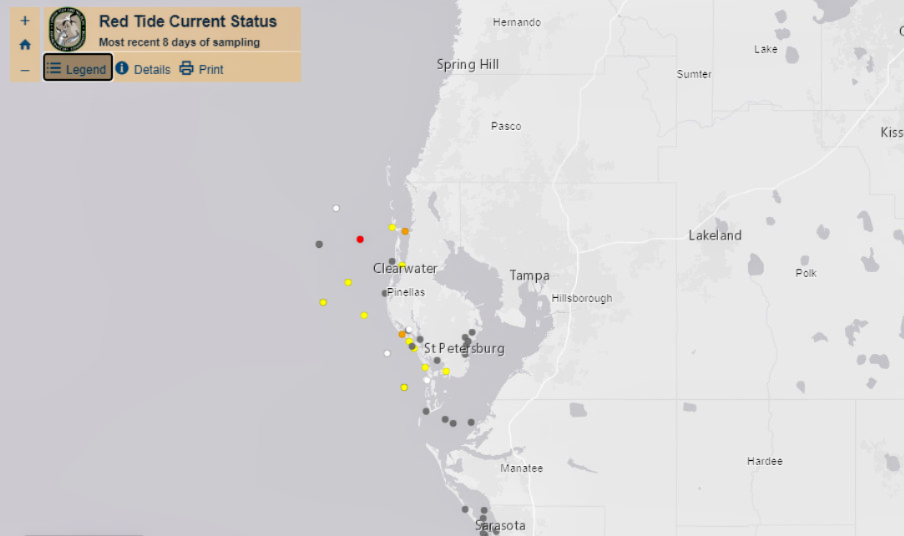Know
Local red tide increases amid storms

The presence of red tide, found in low concentrations around Pinellas County before Hurricane Helene, has increased in the storm’s aftermath.
Chris Robbins, associate director of science for the Ocean Conservancy, said there is “absolutely” a correlation between storms and red tide. Meteorologists expect Hurricane Milton, now a Category 5, to hit the area Wednesday evening.
The latest Florida Fish & Wildlife Conservation Commission (FWC) map shows low to medium concentrations of Karenia brevis, the organism that causes red tide, from coastal St. Petersburg to Clearwater. Water samples found a high concentration of the harmful algae offshore of Honeymoon Island.
County officials recently noted that beach community residents “cleaning out their homes and businesses from Hurricane Helene may experience respiratory irritation … especially when the wind is blowing onshore.”
“It is not known if Hurricane Helene is linked to this occurrence of red tide, nor when conditions will improve,” states the announcement.
Red tide naturally occurs in the Gulf of Mexico. However, excess nutrients like nitrogen and phosphorus can increase intensity and duration.
Fertilizer and stormwater runoff provide the food harmful algal blooms need to grow. FWC maps began showing low red tide levels after torrential rain inundated much of the area in early September.
Concentrations have increased exponentially in Helene’s aftermath. Over 1.5 million gallons of sewage spilled in St. Petersburg.
“The signal is there,” Robbins said. “There is a tight correlation between the arrival of a hurricane and the rain and runoff it generates – or the release of untreated sewage because the plants are overwhelmed and need to be shut down.
“It surely contributes to the fueling of Karenia brevis and red tide.”

The latest red tide sampling map. Screengrab.
Robbins said the waters surrounding Tampa Bay typically have low nitrogen levels. Storm runoff provides the missing fuel needed to “supercharge these red tide events” and other harmful algal blooms that are more harmful to wildlife than people.
Red tide causes fish kills, and all algal blooms block sunlight needed to support seagrass, a critical habitat. Robbins noted that nutrients deposited from rotting fish can create a positive feedback loop that increases red tide and causes additional marine life to wash ashore.
Local officials must then devote vital hurricane recovery resources to removing dead fish. “And that’s just going to be taxing financially and logistically for a region that’s already using these machines and infrastructure to … clean up from the storm,” Robbins said.
The area now faces a potentially catastrophic hurricane. Robbins said onshore wind from the west could push red tide into Tampa Bay and exacerbate the problem. Offshore winds from the east would push algal blooms away from coastal communities.
“Milton could break up the red tide beginning to form in the area,” Robbins added. “But the rainfall, runoff and potential sewage plant releases that follow could fuel a resurgence in the coming weeks.”







